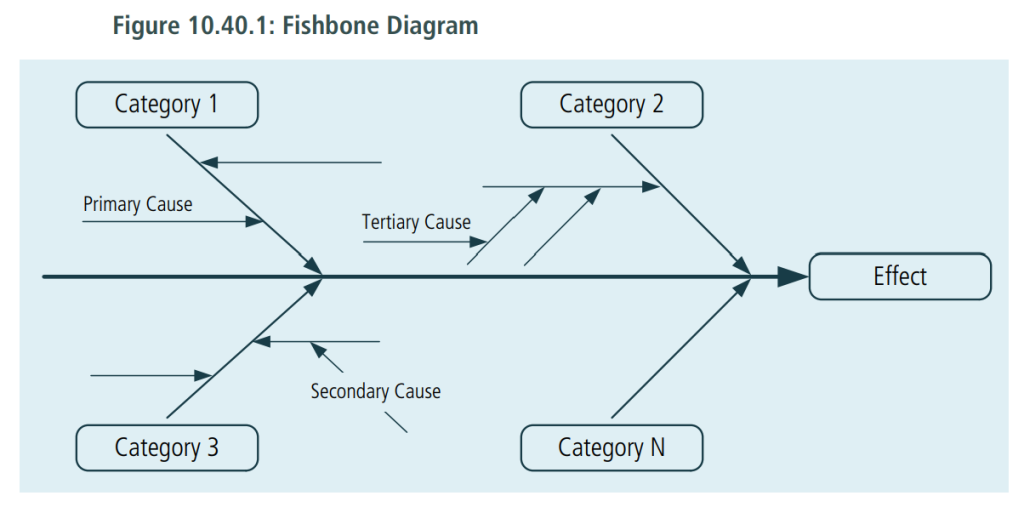10.40.1 Purpose
Root cause analysis is used to identify and evaluate the underlying causes of a problem.
10.40.2 Description
Root cause analysis is a systematic examination of a problem or situation that focuses on the problem’s origin as the proper point of correction rather than dealing only with its effects. It applies an iterative analysis approach in order to take into account that there might be more than one root cause contributing to the effects. Root cause analysis looks at the main types of causes such as people (human error, lack of training), physical (equipment failure, poor facility), or organizational (faulty process design, poor structure).
Root cause analysis helps organize the information in a framework, which allows for deeper analysis if needed. Root cause analysis can be used for:
- Reactive Analysis: identifying the root cause(s) of an occurring problem for corrective action, or
- Proactive Analysis: identifying potential problem areas for preventive action.
Root cause analysis uses four main activities:
- Problem Statement Definition: describes the issue to be addressed.
- Data Collection: gathers information about the nature, magnitude, location, and timing of the effect.
- Cause Identification: investigates the patterns of effects to discover the specific actions that contribute to the problem.
- Action Identification: defines the corrective action that will prevent or minimize recurrence.
10.40.3 Elements
.1 The Fishbone Diagram
A fishbone diagram (also known as an Ishikawa or cause-and-effect diagram) is used to identify and organize the possible causes of a problem. This tool helps to focus on the cause of the problem versus the solution and organizes ideas for further analysis. The diagram serves as a map that depicts possible cause-and-effect relationships.
Steps to develop a fishbone diagram include:
Step 1. Capturing the issue or problem under discussion in a box at the top of the diagram.
Step 2. Drawing a line from the box across the paper or whiteboard (forming the spine of the fishbone).
Step 3. Drawing diagonal lines from the spine to represent categories of potential causes of the problem. The categories may include people, processes, tools, and policies.
Step 4. Drawing smaller lines to represent deeper causes.
Step 5. Brainstorming categories and potential causes of the problem and capturing them under the appropriate category.
Step 6. Analyzing the results. Remember that the group has identified only potential causes of the problem. Further analysis is needed to validate the actual cause, ideally with data.
Step 7. Brainstorming potential solutions once the actual cause has been identified.

.2 The Five Whys
The five whys is a question asking process to explore the nature and cause of a problem. The five whys approach repeatedly asks questions in an attempt to get to the root cause of the problem. This is one of the simplest facilitation tools to use when problems have a human interaction component.
To use this technique:
Step 1. Write the problem on a flip chart or whiteboard.
Step 2. Ask “Why do you think this problem occurs?” and capture the idea below the problem.
Step 3. Ask “Why?” again and capture that idea below the first idea.
Continue with step 3 until you are convinced the actual root cause has been identified. This may take more or less than five questions—the technique is called the five whys because it often takes that many to reach the root cause, not because the question must be asked five times.
The five whys can be used alone or as part of the fishbone diagram technique. Once all ideas are captured in the diagram, use the five whys approach to drill down to the root causes.
10.40.4 Usage Considerations
.1 Strengths
- Helps to maintain an objective perspective when performing cause-and-effect analysis.
- Enables stakeholders to specify an effective solution at the appropriate points for corrective action.
.2 Limitations
- Works best when the business analyst has formal training to ensure the root causes, not just symptoms of the problem, are identified.
- May be difficult with complex problems; the potential exists to lead to a false trail and/or dead–end conclusion.
